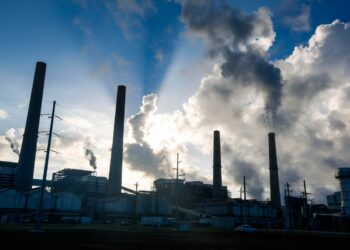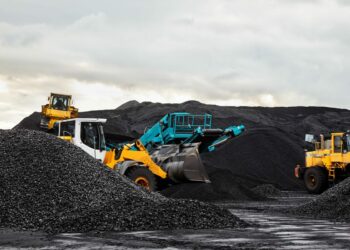This week’s Current Climate, which every Saturday brings you the latest news about the business of sustainability. Sign up to get it in your inbox every week.
After months of negotiations, Tuesday saw President Joe Biden sign into law a sweeping bill related to climate, healthcare and taxes. The bill calls for $369 billion in spending on climate and energy programs, as well as providing a variety of tax incentives geared towards renewable energy production. All of the spending and tax provisions are in service to a goal of cutting U.S. climate emissions by 40% before the end of the decade. The bill is expected to be a boon for a variety of industries, including green hydrogen. The bill also provides a number of incentives for consumers to purchase not only things like electric vehicles and rooftop solar systems but also improvements in home energy efficiency and electric appliances.
The Big Read
Scientists Building Up Arsenal To Destroy PFAS ‘Forever Chemicals’
Researchers at Northwestern University outlined a potential way to destroy the synthetic so-called “forever chemicals” known as PFAS in a paper published Thursday in the journal Science, the latest work aimed toward developing means to break down the pervasive chemicals that have been found to be harmful to human health.
Discoveries And Innovations
A newly bred version of Camelina can be grown in soil in North America to enable “double cropping” in farmland where that was previously impossible, which could help boost food yields without taking up more land.
Fossil fuel companies’ plans to reduce greenhouse gas emissions are “incompatible” with the landmark Paris Climate Agreement’s goal of holding the global temperature rise to 1.5 degrees Celsius, according to a new study published Tuesday.
Researchers in Finland have developed a technique that may allow most plastics to be recycled back into virgin-grade materials a nearly infinite number of times.
This California dairy farm is using manure to generate electricity for over 17,000 electric vehicles.
Sustainability Deals Of The Week
Water From Air: Renewable drinking water platform Source raised a $130 million series D round led by Breakthrough Energy Ventures and the Drawdown Fund. The capital will be used to build more of its solar-powered hydropanels, which pull water vapor from the air to create potable water.
Undersea Genomics: The Minderoo Foundation and genomics company Illumina have announced a $28 million partnership to provide genomics testing for undersea ecosystems in order to allow conservationists to make better informed decisions.
Raising Shrimp In A Box: Atarraya, which is developing sustainable shrimp farming technology akin to vertical farming, announced that it has recently raised a $3.9 million series A at a $41 million valuation.
On The Horizon
The COP27 Conference is just a few weeks away. And one of the groups in attendance will be ProVeg International, which will be focused on informing attendees on what needs to happen in the food and agriculture industries to become more sustainable.
What Else We’re Reading This Week
How the Huge New US Climate Bill Will Save You Money (Wired)
Rare ESG Debt Format Endorsed as Key to Dodging Greenwashing (Bloomberg)
By 2050, most of the US will be blanketed by extreme heat belt (Popular Science)
Green Transportation Update
President Biden’s signing of the Inflation Reduction Act is a big deal for the electric vehicle industry, creating new incentives for both new and used cars and trucks and that for the first time will be available at the time of purchase. But there’s a wrinkle: going forward vehicles that get the credit have to be built in the U.S., need to cost less than $80,000 and, eventually, also need to have batteries using minerals sourced from the U.S. or countries it has free-trade agreements with. Also, only buyers whose combined household income is less than $300,000 can get the new credit. However, until the end of 2022, some vehicles can still get the previous $7,500 tax credit, as long as buyers are below the income threshold.
The Big Transportation Story
1000 Miles Per Charge – What’s ‘Under The Hood’ Of The Longest Range Electric Cars?
Newcomers in the electric vehicle market are leading the way in terms of efficiency and range. How so? There is one often overlooked component, which, quite literally, drives not only their performance but has a huge impact on the entire car design. What’s under the hood of the longest-range EVs?
More Green Transportation News
Fisker Considers U.S. Ocean Production Amid Shakeup In EV Tax Credit
China’s Electric Car Makers Poised To Raise Their Game In Europe
New SEMA Garage Propels Aftermarket Industry To Future Technologies
Why Used EV And Hybrid-Car Prices Are Skyrocketing
Revel launches city’s first vehicle-to-grid charging system (Crains New York)
Charge Enterprises Sees Red In Q2 But It’s Rosy To CEO
For More Sustainability Coverage, Click Here.











